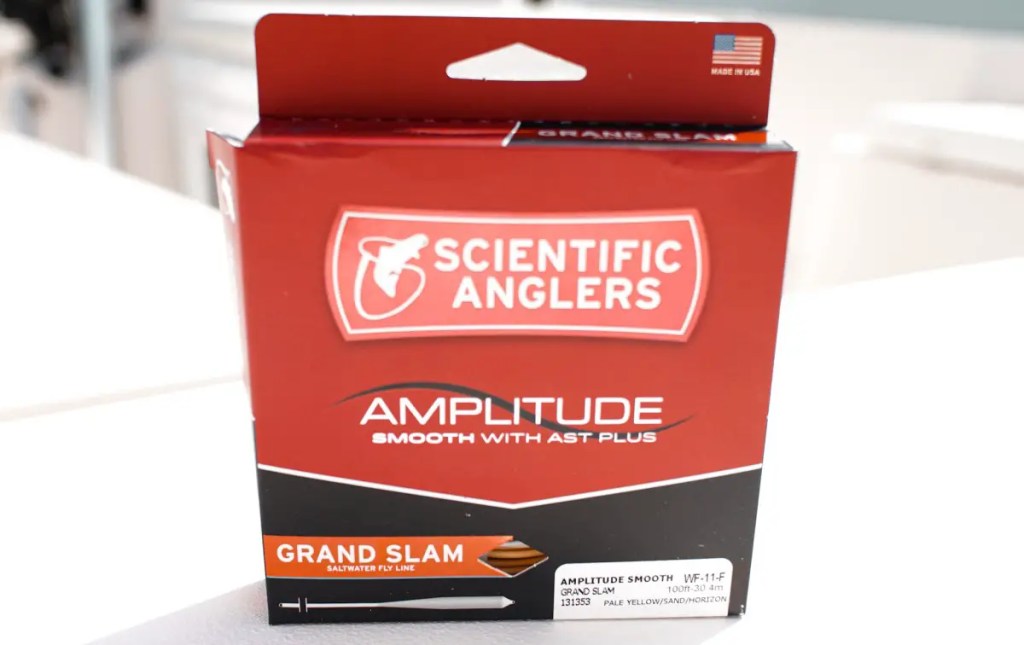Choosing the right fishing line can drastically improve your fly fishing experience. There are many parts and several materials used to construct these lightweight, heavy-duty lines. You’ve probably heard many people refer to PVC as the primary material, but you might be surprised to learn how they’re crafted.
Fly fishing line is made of a dacron or braided nylon core that is coated with polyvinyl chloride (PVC). One manufacturer, Airflo, currently uses polyurethane for coating their fly lines. All others continue to use PVC.
Choosing the proper line helps castability, prevents line tangles, and helps avoid malfunctions such as knotted lines and break-offs. I’ll explain how lines are created, what the important parts are of each line, and compare between the popular materials used today.

How Is a Fly Fishing Line Made?
As mentioned above, a fly line is nothing more than backing material with a coated finish. Backing materials include the use of dacron or a form of braided nylon. Adding a PVC coating to these materials allows the fly line to slide smoothly through the guides. This coating also makes the line more manageable and helps avoid line tangles. The extra weight of the PVC coating will help make the line load better during a cast. Fly line needs to be durable and stretchy while maintaining the ability to be tied in knots. Keep in mind that there are many different applications of fly lines, so it’s essential to look into each company and its products before making a selection.
Here’s the four-step process used to make a fly fishing line:
- Companies choose between dacron and braided nylon materials for the core. According to Flyline, dacron is the older model, though it offers much lower prices than braided nylon. Braided nylon is durable, long-lasting (up to two to three times longer than dacron), and much more reliable in most scenarios. Manufacturing dacron is more affordable for the company, which is why they charge less.
- The dacron or nylon is coated with PVC. Using a proprietary method, each manufacturer will then coat the core with a form of PVC. The coating can be of varying colors and thickness. The majority of fly lines taper from thin to thick. The thicker portion is referred to as the head and is designed to help load the rod when casting.
- Lines are cut into spools, and loops are welded together. The typical fly line length is 100ft. Although this is the standard length, some trout lines may be shorter, and salmon lines can be longer. On each end of the fly line, a welded loop is added. These loops at either end make attaching the line to the backing or adding a leader much more manageable. Depending on the manufacturer, some lines may not come with loops. Here, a knot such as the nail-knot or Albright-knot is used to attach the backing and leader.,
- The line is placed on a spool and packaged for retail. Fly lines are sold in boxes that identify the weight of the fly line and its taper or designed application. Within the box, the line is wound on a spool that can be used for lining your fly reel. The ends of the fly line are marked to designate the end attached to the backing versus the head of the line.

A straightforward process
As you can see, the step-by-step process of making a fly fishing line is relatively simple. The material is chosen, often melted and shaped, braided, cut, spooled, labeled, and shipped. This unique procedure is similar to how a traditional fishing line is made, though the four-part formula varies.
What Are the Four Parts of Fly Fishing Lines?
It’s essential to know precisely what a fly fishing line is made of and how it is designed so you can better choose an appropriate option. It begins with learning the four main parts. Teton Valley Lodge breaks down the four-part system used in almost every fly fishing line. They note that lines are often made of similar materials but a different thickness, stretchiness, length, and overall purpose.
It would be best if you never went fly fishing without these pieces. You never know when you may need to add a piece of tippet as a bite section or reduce visibility for wary fish.

The Line Itself
The fly line is the primary part of your fly fishing line. It makes up the vast majority of the system, which is why it’s the most crucial portion. Having backing on one end and a leader on the other, the fly line creates the cast and is designed to slide smoothly through the rod. Fly lines can be designed to float on the surface or sink at varying speeds. Depending on how you fish or the species you target will determine whether you need a floating or sinking line.
The Tippet
Tippets are designed to extend your fly fishing line’s leader. The leader is at the front of everything, but it gets snagged or cut regularly, so it’s a good idea to have some tippet line to recover what will inevitably be lost. Over time your leader will become shorter as you cut off and tie on new flies, so having plenty of tippet on hand should be a priority. In addition to lengthening the leader, tippets can increase diameter when fishing for species with rough or sharp mouths or can be used to reduce the diameter to avoid the line being seen.
The Leader
Since the leader is at the front of the line, it’s the first part that hits the water and the last to leave. The leader holds the lure, which is called a fly when it comes to fly fishing. Getting a durable leader will prevent the line from snapping. Most leaders are made out of monofilament or fluorocarbon material. Leaders are constructed in varying lengths and diameters depending on the species you target. Leaders can be purchased pre-tied or created by tying pieces of varying leader sizes together. For more information on constructing leaders, check out What size leader for Saltwater fly fishing?

The Backing
The backing connects to the spool and fly line, holding everything together. It’s the final piece of the puzzle, sitting closer to the rig than anything else. It’s also highly unlikely you’ll see it too often unless you target very large fish. The backing is specifically added to fill space on the fly reel and provide a long running line for large fish. Remember, the typical fly line is only 100 feet long, so the thin diameter of the backing provides ample room for a fish to run without taking all of your line. Backing is made of dacron or braided nylon. It is similar to braided fishing line that is used on a conventional reel and comes in varying colors and strengths.
Should You Choose Fluorocarbon or Monofilament?
Most tippets and leaders consist of fluorocarbon or monofilament, and it’s rare to find tippets and leaders made out of anything else. While everything else is made with dacron or braided nylon, these two materials are designed to handle the front of the operation.
Comparing Fluorocarbon vs Monofilament
- Fluorocarbon is usually stronger and lasts longer than monofilament leader lines. Fly Lords Mag shows monofilament is thinner and therefore not as dense or strong. If you’re trying to fly fish for large fish, you’d be better off choosing a fluorocarbon variant.
- Monofilament lines stretch much more than fluorocarbon, which can be incredibly advantageous. While stretchiness limits sensitivity, it’s perfect for catching a hard-fighting fish that pulls the line.
- Fluorocarbon lines sink quicker than monofilament lines. This is neither a pro nor a con (it’s based on the situation at hand and personal preference). Sinking lines work well with sinking flies, and floating lines work best with floating flies. Match the leader with the fly for the best results.
- Fluorocarbon fly fishing lines are harder for fish to see in clear water. If the fish can’t see the line, they’re more likely to bite the bait. However, monofilament fly fishing lines are slightly opaque, which can be advantageous in brackish water. The difference is minimal but worth considering if you can choose both materials.
Overall, fluorocarbon has greater breaking strength and is less visible. Fluorocarbon is less abrasion resistant than monofilament and is prone to be cut quickly. Monofilament has a slower sink rate and greater abrasion resistance. Both fluorocarbon and monofilament have purposes and it is advised to have both on hand.
Conclusion
Now that you know what a fly fishing line is made of, you better understand choosing a fly line. Equally important to the fly line are the other components that make up the entire fly line system. These include the backing, the leader, and tippet material. Having an understanding of each of these components will help you cast better and land more fish. Arguably the most important of these components is the leader. The leader is attached directly to the fly and is your final defense between you and the fish. When selecting a leader material it is important to understand the difference between fluorocarbon and monofilament.
Fluorocarbon is typically stronger and longer-lasting than monofilament, yet monofilament stretches more than fluorocarbon. When selecting a fly line or constructing a leader, your local fly shop is a great resource for tips and advice.
